If you have followed my YouTube channel, you know that there are 3 types of learners: visual, auditory, and kinesthetic. You can either be one of these or you may be an amalgamation of two or all three. However, let’s do a deep dive into each, starting with those who are visual learners. What advantage do you have if you are a visual learner? How do visual learners fare better than others? What are their advantages in real life, problem-solving, tackling difficulties, etc.? From the classroom to collaborative projects, a visual learner has benefits everywhere, if they know how to properly use their skill to their advantage.
In this article, I will focus on who is a visual learner. What is the benefit if one is a visual learner and finally what exclusive advantages are available to those who fall under this category? Before I dive into the depths, here’s a request. If you wish to lead a more positive and fulfilling life with a high level of productivity, subscribe to Guilt Free Mind. The subscription option is present in the sidebar. If you like watching videos, subscribe to the YouTube channel of Guilt Free Mind. Remember to ring the notification bell and set it to ALL so that YouTube notifies you the moment the next video releases.
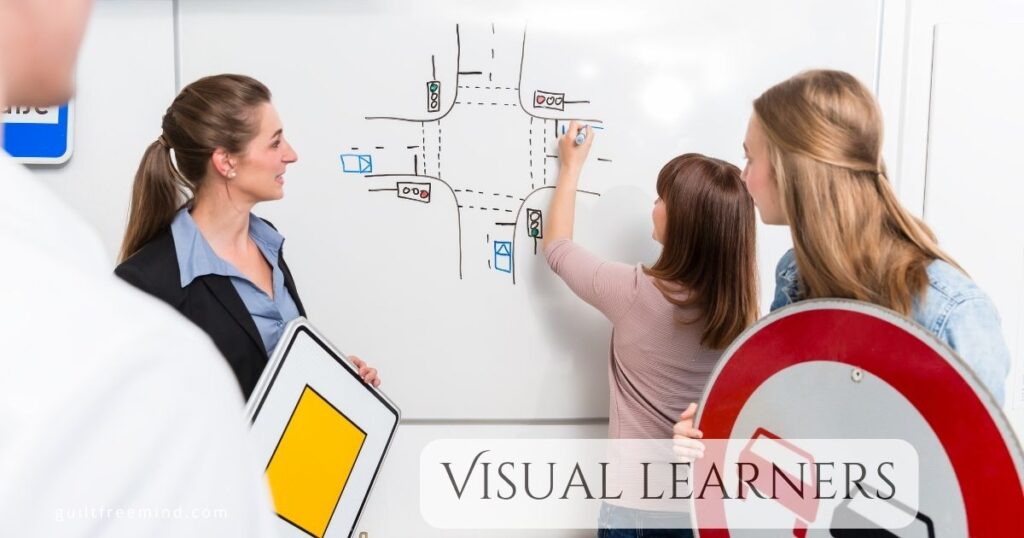
Table of Contents
Let’s start with understanding the benefits of visual learners:
A significant portion of the population is made up of visual learners. Therefore, understanding their traits is crucial to truly understanding what all they can do. Let’s look at the different traits that make up a visual learner. These will help you understand how a visual learner’s capability can be boosted by working on these traits:
Visual aids
Visual learners prefer to work with visual aids since they are strongest visually. They fare better with flowcharts, graphs, diagrams, pie charts, and illustrations. This form of media allows them to process the information much faster and retain it quicker.
High visual aspects
Such people prefer to go for subjects that have a high level of visual aspects like multimedia, design, art, and other visual-based careers. They have an uncanny ability to understand and convey complex ideas via images.
Imagining concepts
Since their strong suit is visualization, they do very well with imagining the concepts in their heads. If you can paint a picture with your words, then explaining concepts to a visual learner is a piece of cake. If they are only given verbal instruction without any visual representation, they struggle.
Other factors that benefit visual learners
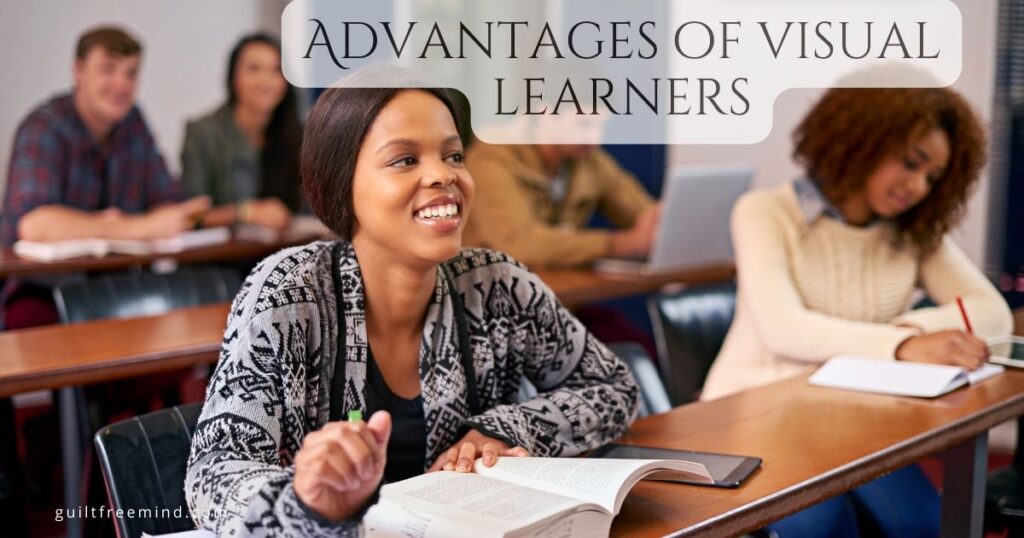
- For a visual learner, studying /working in a cluttered space is impossible. Clutter boosts their distraction. They need visually appealing and organized spaces for their productivity to shine.
- The observation skill in the case of visual learners is very high. They often notice details that most people skip. This attention to detail enhances their ability to remember and understand information better.
- Highlighting, colored headings, color-coded notes, and other visual appeals work for visual learners. These help them to organize the information better and easily process it. This also boosts their recall.
- Diagrams and mind maps are crucial components for visual learners. These allow the visual learner to better categorize the information, helping them understand complicated topics.
- If they are given only auditory instructions, it’s hard for them to process. Adding visual elements along with auditory instructions helps them.
- Visual learners also find dreaming and visualizing concepts to be very helpful. Forming such mental imagery helps them process the information better.
- Visual learners can recall information easily via the use of mental images. They must be encouraged to form visual associations so they can better remember information.
Impact of visual learners on communication
Since visual learners prefer to use visual stimuli, they do not adhere to normal verbal communication styles. Such people dip into the extra oomph factor by making the communication visual for better explanation.
Such learners prefer to present and better absorb information when it’s presented as graphs, charts, images, and other forms of visual aids. When communicating with them or when they are communicating with others, they rely on the use of images, and bar diagrams. flowcharts etc.
When dealing with complicated data and concepts, if the information is presented in the form of graphics, it can significantly enhance the level of understanding and comprehension. for the visual learners in the team. It is much easier to understand the patterns and relationships, allowing communication to go smoother.
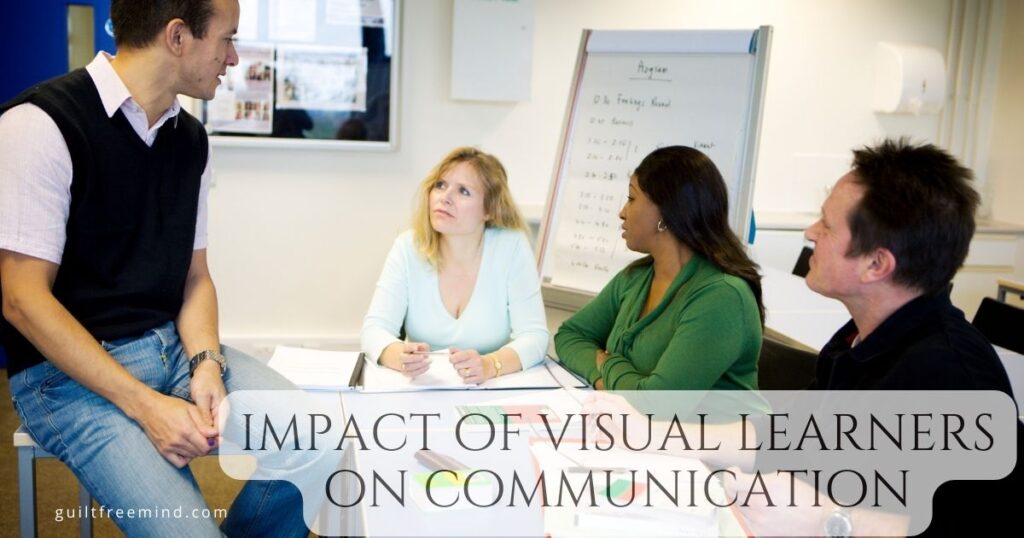
- When information is presented visually, they notice details and understand the intricacies of the presentation. The visual content allows them to ensure that they get and understand the information better.
- The color coding and design elements can act as powerful means of communication for visual learners. These can help the learner easily navigate the information, make the content more engaging, and evoke emotions.
- Visual learners also respond very well to storytelling via images. Trying to incorporate narratives with visual elements can capture their interest, making the discussion more impactful.
- To keep visual learners engaged in communication, visual elements can come in very handy. This allows them to understand the concept and interact with the content.
- With visual learners, diagrams and mind maps can be very beneficial. Mind maps can provide clarity and allow them to understand the big picture.
- Bullet points, underlining, and other visual cues help usual learners better navigate the information. This way they can process the information quicker and more efficiently.
Benefits of visual learners in educational settings
In education settings, visual learners can bring many advantages and unique strengths. These benefits can have a major contribution towards generating a more inclusive and effective learning environment. Having a visual learner in an educational setting can be a huge advantage for a new learner.
A visual learner can be amazing at processing graphs, charts, and diagrams. They can quickly process information and grasp concepts much more easily. This makes them perfect for subjects that require visual presentation.
If the information is presented visually, visual learners can remember information much easier and for a long time. This results in enhanced retention, and recall abilities. This is a huge boon during exam time.
A visual learner has a high level of creativity and are amazing at artistic pursuits. They are amazing candidates for multimedia projects, design, and art where their visual capability is enhanced and used to the full extent.
In group discussions, visual learners bring an amazingly unique perspective. Most often they go for diagrams, sketches, and visual aids to present their point.
generally, another huge advantage, that visual learners have over others is their ability to learn well from presentations. With the rise in multimedia use in education, the chances of visual learners understanding the concepts are much easier.
Benefits of visual learners in collaborative environments
Visual learners have a huge advantage in the case of a collaborative environment. They can bring in their unique set of strengths that allows for enhanced teamwork and more opportunities for success. If you are a visual learner, you have the following advantages in collaborative environments.
Clear and concise communication
Since the modes of communication of visual learners are diagrams, presentations, chants, graphs, and other visual modalities, they can communicate their thoughts much more easily to other members of the team. This further reduces the risk of the other person misunderstanding the information.

Enhanced presentation skills
Visual learners rely heavily on visual media to get their point across. Their compelling visuals keep the audience focused, and engaged throughout the presentation. This makes their presentation more impactful.
Brainstorming session
Visual learners display excellent understanding if the information is presented visually. Thus, they do amazingly well in brainstorming sessions where the ideas are presented visually. They may make use of charts, bars, whiteboards, animation, etc to help the brainstorming session go smoother and get lots of work done
Creation of visual project plans
When a visual learner starts on a project, they design visual project plans, flowcharts of their steps, and a detailed timeline. This organization pattern allows them to properly organize their task, identify the dependencies, and design a clear road map that is easy for everyone in the team to understand and follow.
Contributes towards visual documentation
When they are a part of a collaborative project, visual learners can contribute towards the development of the visual documentation. Whether the project requires, the illustration of concepts, infographics, or the designing of project summaries, the visual skill of such people enhances the documentation quality.
Improved ability to solve problems
The way a visual learner approaches a problem is by mapping out potential solutions. When the problem is out of your head and on a piece of paper, it does not seem so impossible. Putting the problem on paper allows you to approach it will a decluttered mind. This increases the chances of finding a solution faster.
Efficient information sharing
Visual learners are much more adept at efficiently sharing information by use of visual media. This can include sharing images, making mind maps, and visual summaries, and utilizing infographics to convey specific points.
Effective collaboration
In the case of remote or virtual collaboration, visual learners can easily adapt to digital tools for sharing details, and visuals, taking part in virtual whiteboard sessions, etc. This form of adaptability boosts their contribution towards virtual teamwork.
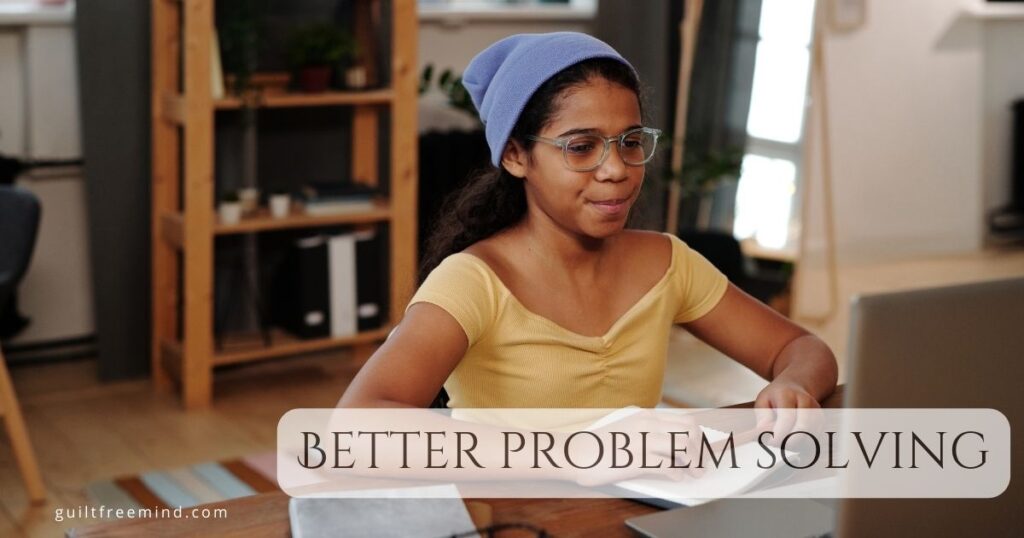
Benefits of visual learners in Innovation and problem-solving
Visual learners bring along their unique strengths to the problem-solving scenario. They contribute towards problem solving their unique strengths, and creative solutions and allow for the birth and development of new ideas. A visual learner has several advantages over other learner types in the case of problem-solving and innovation. Some of these benefits are described in this section:
Recognizing the patterns
Visual learners have an innate ability to recognize relationships and associations. This skill set comes in very handy in the case of problem solving where the primary method of solving the problem is to identify the relations and connections between the different data sets. Their ability to recognize the pattern can lead to the problem being solved much earlier.
Concept visualization
Even if what the visual learner sees are words, they tend to form an instant image in their heads. They read words and form images in their heads simultaneously. This gives them the added advantage of being able to use visualization techniques to easily understand difficult concepts.
Creative ideation via the use of mind maps
I have reiterated many times in this blog post about the importance of visual representation in the case of the visual learner. When brainstorming, visual learners use mind maps to organize the ideas spatially. This allows them to easily spot connections and discrepancies that otherwise would not be visible easily.
Storyboarding
Another technique very commonly used by visual learners is storyboarding. This helps them map out the user experience and visualize the idea that they plan to implement. This also allows them to communicate clearly and refine innovative concepts.
Design thinking
The most common design thinking methods: ideation, prototyping, and empathy align well with the visual learners. Furthermore, their ability to easily represent their ideas on paper with different visual techniques further enhances their thinking process allowing for the fostering of innovative solutions
Visual analogies
Visual analogies are completely in the wheelhouse of the visual learner. They use visual analogies to explain difficult and complex ideas. This also helps them draw parallels between different and unrelated issues.
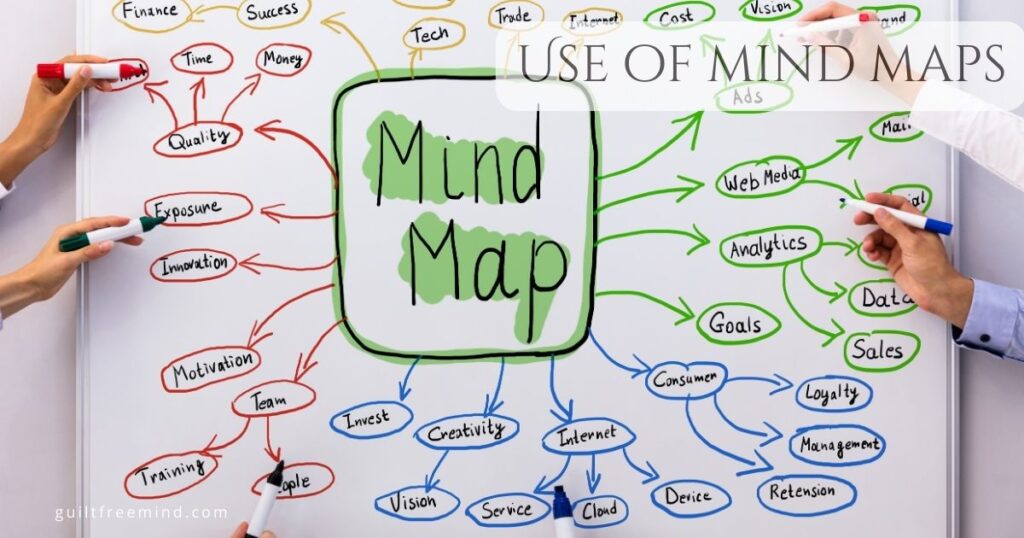
Quick grasp of visual data.
In case the scenario contains large amounts of data, it is beneficial for visual learners to draw parallels or understand relationships. When presented in the form of graphs and charts, visual learners can understand a whole lot very quickly. This allows them to understand the data quickly. In turn, this ability allows them to quickly make decisions.
Quick communication through infographics
As I mentioned before, for visual learners, processing complex information is very easy if they are presented in the form of infographics. This form of visual representation allows them to better convey their thoughts and messages while enhancing the overall message impact as well.
Better collaboration in workshops
If it’s a visual thinking workshop, then, needless to say, a visual learner will be very successful. Here problem-solving and collaborative brainstorming sessions involve lots of drawing, sketching, and other forms of visual representation which is a part of a visual learner’s ability to grasp and comprehend new information.
Adaptability to visual collaboration tools
Of late with the rise in digital collaborations, this has been a huge boon for visual learners all around the world. They can easily adapt to visual tools for collaboration. These tools allow them to be better at teamwork. They can also use many visual tools available at their disposal to convey their ideas much better.
Enhanced Prototyping
When it comes to creating prototypes and visual models, no one can beat a visual learner. Their ability to utilize visual tools to their advantage is greatly beneficial for them for materializing and testing their ideas quickly.
Handling Strategies and Challenges for visual learners
Every learner has their own set of unique skills that can be beneficial for their progress. Visual learners can understand and grasp ideas quickly when presented visually. This allows them to approach the information from many different angles and provides them with perspectives that may be different from others. When it is time to implement, here are the advantages visual learners have over others:
Benefits of Visual Learners In handling challenges
- As I mentioned before, visual learners can easily identify trends and patterns. This allows them to identify recurring challenges and develop strategies
- Their ability to visualize allows them to engage in problem-solving creatively.
- They can quickly grasp information presented as infographics. This allows them to easily handle challenges requiring a huge amount of information understanding.
- They can effectively communicate their thoughts using visual aids.
- Their attention to detail allows them to grasp specific sections of a challenge that other learners may overlook.
- They use visual strategies to quickly and easily solve their problems.

Visual Learners Benefits In designing strategies
- They draw mind maps to organize thoughts, and ideas and better understand the problem at hand.
- Using sketching, drawing, or diagramming, visual learners can create a visual representation of the outcome they desire. This allows them to quickly formulate strategies.
- Storyboarding allows them to put down the steps for overcoming a challenge easily.
- when engaging in collaborative problem-solving sessions, visual learners use visual aids to explain their points of view.
- They use visualization tools to better manipulate and explore the data. This allows them to understand the challenge deeply.
- Visual learners rely on visual feedback mechanisms to track their progress and solutions.
- Such people are experts at using metaphors and analogies to put their point across.
- Due to the advent of digital visual platforms, visual learners have become more adept at presenting data and expressing their opinions.
Visual learners advantage in the digital age
In the digital age, the opportunities for visual learners have grown by leaps and bounds. bounds. Technology’s integration into the fields of education and all the other sections of our lives has caused a significant difference. Here are the key aspects when it comes to learning at a visual age:
- With the abundance of interactive multimedia content like virtual reality, simulations, videos, and animations, there are many ways available for the visual learner to engage with the content.
- Online platforms and other educational institutions use learning management systems and digital tools to provide visual learners with a central hub for accessing everything related to their courses.
- The presence of digital collaboration tools allows learners to precisely work on ideas, brainstorm, and work on projects irrespective of where they are located in the world.
- The presence of online courses has allowed people to learn any and everything they want at the click of a button.
- Adaptive learning technologies use specific algorithms to tailor the person’s learning style so they can do more in less time.
- The presence of simulations and games boosts the learning experience of the individual.
- The digital storytelling platforms can be used to share and create visual narratives very easily.
- Augmented and virtual reality allows a visual learner to learn in an immersive manner that extends beyond the classroom.
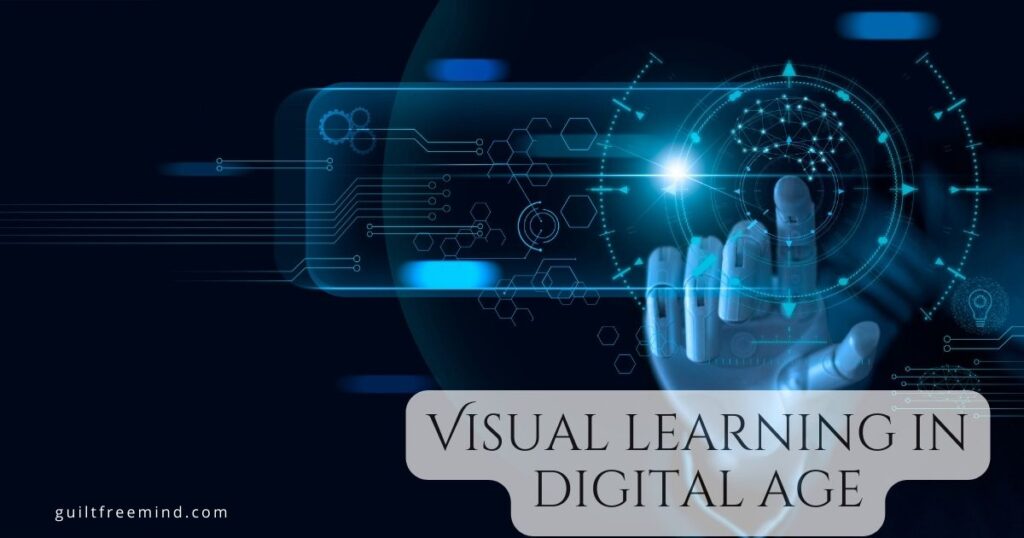
How do visual learners benefit in the case of professional and personal growth?
A visual learner has an advantage when it comes to professional and personal goals. They can use their strengths to excel in various aspects of their lives. There are many ways in which a visual learner benefits over others when it comes to personal and professional growth.
- Visual learners excel in the presence of visual stimuli. This involves learning skills. absorbing information and learning new skills.
- Visual learners can easily use the many visual tools available at their disposal to plan their personal and professional growth.
- Visual learners rely on visual memory. Therefore they see the information in visual format.
better they can retain it for the long term. - Visual learners use creative ways to solve problems like using mind maps and charts. This pattern allows them to think easily and also communicate their ideas clearly to the other person.
- Visual learners can easily make use of the variety of platforms available to support their professional and personal goals.
- If the feedback for visual learners includes graphs, charts, or bar diagrams, the ‘information is retained much easier by the visual learner.
- When presenting ideas, visual learners have a distinct advantage, since in their minds they know exactly how the idea needs to be presented so it can better impact the audience.
- The use of digital calendars and time blockers makes visual learners more productive operators.
- The use of visualization techniques by the visual learner enhances their chances of making the correct decision since they use various visual tools to map out the process and consequences.

Conclusion
Being a visual learner not only helps in studies, but it also helps such learners smoothly navigate various aspects of their lives, perform better in studies and their workplace, and finally solve problems quickly and easily via the use of visual learning tools like flowcharts, bar graphs, mind maps, etc.
In the professional environment, visual learners excel in problem-solving, effective communication, goal-setting, and proper planning. These benefits provided to the visual learner greatly help the project get done faster.
The recent synergy that has happened between visual learning style and technological advancements has led to significant improvement in the performance of visual learning methodologies. With the options of mind maps, and different forms of visual representation options like simulations, animations, etc, it has become easier for the visual learner to learn, process, and present information much easier.
If you wish to know more about productivity and how to manage your mental health in this stressful environment, subscribe to Guilt Free Mind. The subscription option is present in the sidebar. If you like watching videos, subscribe to the YouTube channel of Guilt Free Mind. Remember to ring the notification bell and set it to ALL so that YouTube does not miss out on reminding you when a new video is released from the channel.
If you have any queries about this or any other blog post on Guilt free Mind, feel free to put them down in the comment section. I will be happy to answer them as soon as possible.
See you in my next blog post
Frequently Asked Questions
Visual learning is a learning style where the learner learns better via visual stimuli like diagrams, charts, and images. It differs from auditory and kinesthetic as it emphasizes the use of visual media for learning, comprehension, and understanding
Educators can easily accommodate visual learning by adding aids like diagrams, slides, and video options in the lessons. They can also encourage the use of note-taking and provide written instructions for the benefit of visual learners.
Visual learners are thriving in the digital age. Online education provides visual learners with multimedia and interactive content, visuals, digital textbooks, and other collaborative platforms that boost the visual engagement of the – learner, allowing them to learn better.
There are many fields like graphic design, filmmaking, and architecture, where visual learners excel. These are the regions where their strengths flourish and they perform amazingly well.
Visual learners can easily leverage their strengths of visual learning for a variety of personal development tasks like goal setting, mind maps, vision boards, etc.
